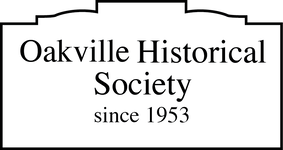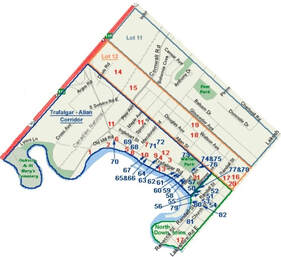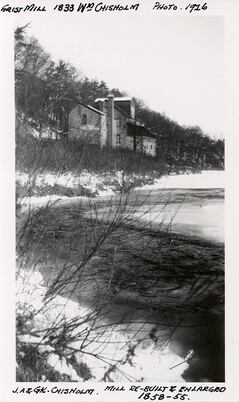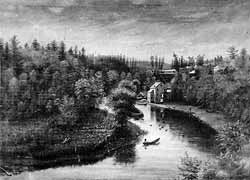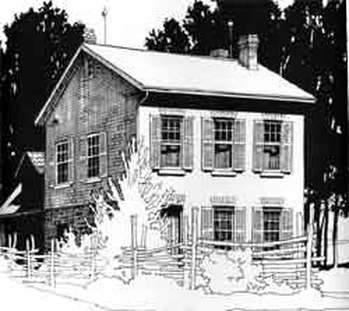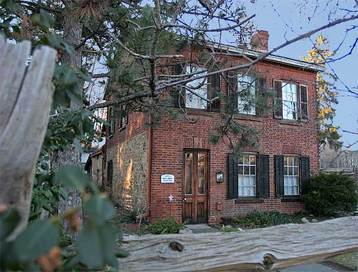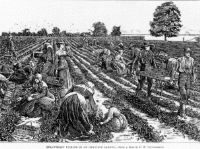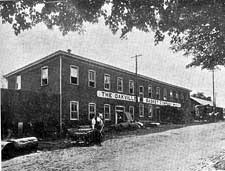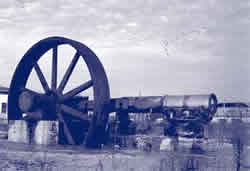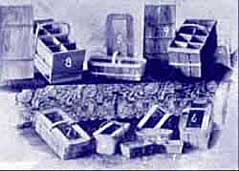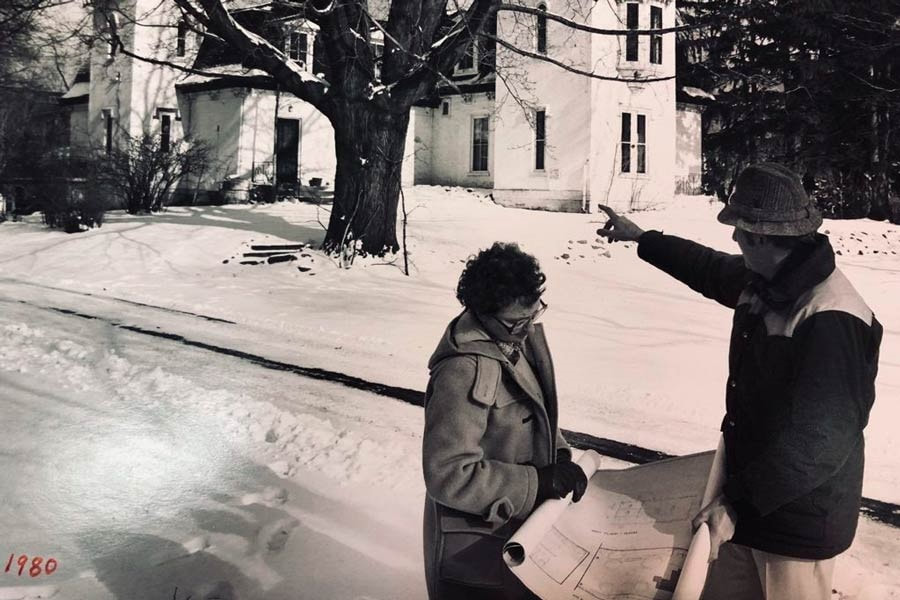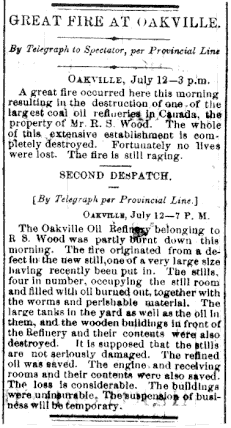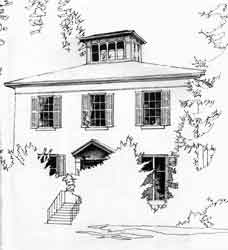|
Trafalgar-Allan Corridor
Safely enjoy our self-guided walks. Please share your thoughts and suggestions with us about the walk below. The following snippets relate in some fashion to the history and background of the Trafalgar - Allan Corridor section of the TCRA area, and are presented in roughly chronological order. |
|
The Mills on the sixteen 1827 (#1)
A crucial step in the development of any settlement was the construction of saw and grist mills to provide basic building materials and foodstuff for local consumption and export. The site William Chisholm chose for the mills - both a sawmill and gristmill - was at the "head of navigation on the Sixteen, where the rapids end and the water runs deep for about a mile before entering Lake Ontario."1 This was on the east side of the creek, near Old Mill and Speers Roads. Construction began during the winter of 1827-28 with the building of a dam, as a dam was an essential part of a mill and the best time to build one was in winter, when the water was low.2 In 1830 the sawmill went into production and construction of the gristmill adjacent to it was started. By 1833 it was in production. |
|
"The Mill on the Sixteen," (1856) by Frederick Arthur Verner (1836 - 1928). (Oakville Historical Society)3
"The painting...shows the mill as viewed from the top of the east bank of The Sixteen on Dundas Street [Trafalgar Road] south of the 6th line [Old Mill Road, Lyon's Lane]. ...in the background a train is passing over the wooden trestle...[and] in the foreground is Snake Island which has long since disappeared; at the time...it was the haunt of black water-snakes six feet long and mud turtles large enough to carry a man standing on their backs."4 |
Click here for a 1916 photo of the mill (it had ceased functioning by then) courtesy of the Oakville Historical Society. Here's the entire photo, with margin notes.
Wildlife 1830s (#2)
The wolves that were so plentiful in the back country frequently followed the valley of The Sixteen almost down to the village, and could be heard howling at night in the vicinity of the mill.5
In the Spring, the Sixteen abounded with Atlantic Salmon; in fact, one eighteenth-century French map shows it as "Rivière au Saumon". The fish ran up the St. Lawrence into Lake Ontario in great numbers to spawn in rivers and creeks, where they were taken in large quantities. Weighing from fifteen to eighteen pounds, the salmon were easily caught, a night's catch sometimes filling eight or ten barrels. When salted down the 200-pound barrels sold for 30 or 35 shillings each.6 Fishing in The Sixteen is thus described by Mr. Warr (an Anglican clergyman):
"The mode of fishing practised by the Indians is exceedingly interesting. The operation is carried on at night; two men generally steal along with the utmost caution in their canoe; the one uses the paddle, the other the spear; the former sits in the stern, the latter stands at the bow of the boat; the invariably carry a large piece of pine lighting in a grate which is so arranges as to cast a strong glare upon the water and enable the spearman to see the fish which he strikes with his harpoon with an unerring aim, and instantly throws it into the boat..."
The salmon stopped running during the 1840's..., perhaps because of reckless slaughter and the contamination of the water... by sawdust from sawmills.5
Muskets 1830s (#3)
The section of Oakville along Dundas Street (Trafalgar Road) between George's Square and the mill, and east through Anderson's Bush, is described by a resident in the 1830s as "the place where we gathered in the spring and fall with our old flint-lock muskets and shotguns, to fire at the millions of wild pigeons which used to fly over the town".7
The wolves that were so plentiful in the back country frequently followed the valley of The Sixteen almost down to the village, and could be heard howling at night in the vicinity of the mill.5
In the Spring, the Sixteen abounded with Atlantic Salmon; in fact, one eighteenth-century French map shows it as "Rivière au Saumon". The fish ran up the St. Lawrence into Lake Ontario in great numbers to spawn in rivers and creeks, where they were taken in large quantities. Weighing from fifteen to eighteen pounds, the salmon were easily caught, a night's catch sometimes filling eight or ten barrels. When salted down the 200-pound barrels sold for 30 or 35 shillings each.6 Fishing in The Sixteen is thus described by Mr. Warr (an Anglican clergyman):
"The mode of fishing practised by the Indians is exceedingly interesting. The operation is carried on at night; two men generally steal along with the utmost caution in their canoe; the one uses the paddle, the other the spear; the former sits in the stern, the latter stands at the bow of the boat; the invariably carry a large piece of pine lighting in a grate which is so arranges as to cast a strong glare upon the water and enable the spearman to see the fish which he strikes with his harpoon with an unerring aim, and instantly throws it into the boat..."
The salmon stopped running during the 1840's..., perhaps because of reckless slaughter and the contamination of the water... by sawdust from sawmills.5
Muskets 1830s (#3)
The section of Oakville along Dundas Street (Trafalgar Road) between George's Square and the mill, and east through Anderson's Bush, is described by a resident in the 1830s as "the place where we gathered in the spring and fall with our old flint-lock muskets and shotguns, to fire at the millions of wild pigeons which used to fly over the town".7
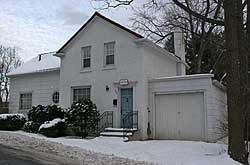
Samuel Lawson's House - 280 Lawson Street 1837 (#4)
It's likely that Samuel Lawson and his family were the first to settle so far north of the village proper, as no other houses existed between theirs and Potter's at Sheddon Street at the time (1837). Wanting to build a house for his family but unable to finance both the purchase of land and a house,.8 he obtained from Wm. Chisholm title to park lot K, for which he was to pay when he could. He built a one-and-a-half story house of hand-made brick (the first in Oakville) on the property, facing Trafalgar Road and surrounded by an apple orchard. Over time the street bordering the property on the north became known as Lawson Street.
As it happened Lawson never succeeded in paying for the land, and knowing this, his last descendant willed the property to a grandson of William Chisholm. The house stood vacant for some time, and there was little left but the brick shell to use in the significantly renovated structure that exists today, now facing onto Lawson Street and bearing the municipal number 280. The apple orchard of course is long gone, occupied instead by several houses.
It's likely that Samuel Lawson and his family were the first to settle so far north of the village proper, as no other houses existed between theirs and Potter's at Sheddon Street at the time (1837). Wanting to build a house for his family but unable to finance both the purchase of land and a house,.8 he obtained from Wm. Chisholm title to park lot K, for which he was to pay when he could. He built a one-and-a-half story house of hand-made brick (the first in Oakville) on the property, facing Trafalgar Road and surrounded by an apple orchard. Over time the street bordering the property on the north became known as Lawson Street.
As it happened Lawson never succeeded in paying for the land, and knowing this, his last descendant willed the property to a grandson of William Chisholm. The house stood vacant for some time, and there was little left but the brick shell to use in the significantly renovated structure that exists today, now facing onto Lawson Street and bearing the municipal number 280. The apple orchard of course is long gone, occupied instead by several houses.
The Breweries 1840 (#5)
Whisky and beer are by-products of the grain business. The Oakville Brewing and Distilling Company began operating in 1836 on Walker Street, overlooking the harbour. One of Oakville's leading industries during its short existence, it distilled sixty gallons of whisky a day.
Another brewery soon started up close to the river bank on Dundas Street (Trafalgar Road) at Division (MacDonald) Street - the steam brewery - of which James Brown was proprietor in 1858. About 1863 Henry Hogben took over this business, which later became "Mr. Townsend's Brewery". When Francis J. Brown became proprietor, about 1870, he called it the Victoria Brewery.9 It ceased operation in 1870, and four years later became the new Chisholm basket factory (see "Strawberries & Basket Factories" below) . Hence that stretch of Trafalgar from south of MacDonald to 6th Line was often referred to as Basket Factory Hill.
Whisky and beer are by-products of the grain business. The Oakville Brewing and Distilling Company began operating in 1836 on Walker Street, overlooking the harbour. One of Oakville's leading industries during its short existence, it distilled sixty gallons of whisky a day.
Another brewery soon started up close to the river bank on Dundas Street (Trafalgar Road) at Division (MacDonald) Street - the steam brewery - of which James Brown was proprietor in 1858. About 1863 Henry Hogben took over this business, which later became "Mr. Townsend's Brewery". When Francis J. Brown became proprietor, about 1870, he called it the Victoria Brewery.9 It ceased operation in 1870, and four years later became the new Chisholm basket factory (see "Strawberries & Basket Factories" below) . Hence that stretch of Trafalgar from south of MacDonald to 6th Line was often referred to as Basket Factory Hill.
Trafalgar - A Toll Road! (and the Tollkeeper's House - 293 MacDonald) 1850 (#6 and #7)
|
By the 1840s traffic bringing goods down to the port from as far north as Owen Sound was so heavy that it was decided to improve the 7th Line (Trafalgar Road). Wood being so plentiful, the surfacing of roads with wooden planks was becoming popular, and in 1846 the Trafalgar, Esquesing and Erin Road Company was formed to build a plank road from Oakville to Fergus, a distance of about 100km. Construction got under way in April 1850 and the first 30km stretch from Colborne Street (Lakeshore Road) to "Stewart's Town" was completed in 7 months.
To provide for maintenance and repair costs, toll gates were installed every few kilometers. In Oakville a toll gate was installed at the junction of the 6th and 7th lines (in the vicinity of where Inglehart and Trafalgar currently intersect). |
Donald Campbell (a tailor) was given the position of keeper of that toll-gate. He purchased a lot at the northwest corner of MacDonald Road and Reynolds Street (now 293 MacDonald) for £100 (approximately $400) and built his home there.
Some 150 years later, the home's windows have retained the original six-over-six sash as well as the original shutter blinds, and a later addition to the rear of the house integrates well with the original stone tail. The two-story front facade is unique in that it displays a fine pattern of Flemish Bond with a cornice of decorative brick work and brick returns at the eaves. The lower story at the rear and on the two sides, like the foundation, is constructed of roughly laid river stones.10
Some 150 years later, the home's windows have retained the original six-over-six sash as well as the original shutter blinds, and a later addition to the rear of the house integrates well with the original stone tail. The two-story front facade is unique in that it displays a fine pattern of Flemish Bond with a cornice of decorative brick work and brick returns at the eaves. The lower story at the rear and on the two sides, like the foundation, is constructed of roughly laid river stones.10
|
By the mid-1850s, the traffic along the toll road was enormous. Nevertheless, the road was not a success. Plank roads in general were simply not durable and had to be rebuilt every 5 years, and in April 1856, presumably reflecting the deteriorating condition of the road, the Company announced that no further tolls would be collected. Two years later the Company declared the road to be unserviceable and that it was unable to reconstruct it. The remnants of the planking were finally removed, and mud and deep holes once again returned to Trafalgar Road. (Note to current Trafalgar residents: a traffic calming technique to consider? Or maybe toll-gates!??)
|
As an aside, Trafalgar Road has had many names over the years: Dundas Street., River Road, Station Road, Basket Factory Hill (S. of MacDonald to Inglehart), and , simply, Toll Road.
|
Strawberries & Basket factories 1860s (#8)
Strawberry growing was introduced to Oakville by John Cross, who farmed to the north of the Railway (Cross Avenue). To support the shipment and sale of the delicate fruit, Cross designed and began manufacturing wooden veneer "strawberry" baskets in the 1860s. John A. Chisholm soon followed suit, setting up basket production in a shed at Division Street (MacDonald Road) that used a wood paring device developed by his son Charles. By the mid-1870's Oakville had become the greatest strawberry growing district in the Dominion. After the Victoria Brewery ceased operation the Chisholms' expanded basket operation moved into that building (by the Creek at Trafalgar and MacDonald) in 1874. In 1889, Pharis Doty & Son took over the Chisholm factory and three years later founded the Oakville Basket Company. Fire destroyed it in 1893,but it was rebuilt, to be burned down again in 1920. It was again rebuilt, further to the north, south of the railway, and remained in operation until 1984. That site until recently (2001) was marked by the flywheel which powered its operations. That artifact is now part of the Oakville Heritage Trails "Pioneer Industry" pavilion which overlooks The Sixteen from its banks on the south side of Speers by the former Old Mill Road. |
|
Mariners' Home 1862 (#9)
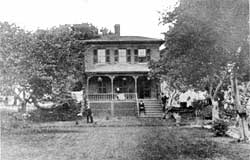
Across the street from Lawson's house, at 279 Lawson Street, is the "Mariners' Home", built in 1862 by Captain Robert Wilson. It earned that title because of the owner's custom of giving a home to ill and homeless sailors during the winters. Captain Wilson was also loved by many black people whom he had helped to escape slavery during the U.S. Civil War, giving them space as stowaways in his grain vessels returning from the U.S.12 (See also the following item #21).
Originally the house, facing Station (Trafalgar) Road, overlooked a spacious lawn and garden. The lawns are still there, along wtih driveways for two other homes. To the left of the house in this photo remains a lovely expanse of lawn and garden.
In the early 1900s this was the home of John Kelley who, amongst other things, was the Mayor of Oakville.
Originally the house, facing Station (Trafalgar) Road, overlooked a spacious lawn and garden. The lawns are still there, along wtih driveways for two other homes. To the left of the house in this photo remains a lovely expanse of lawn and garden.
In the early 1900s this was the home of John Kelley who, amongst other things, was the Mayor of Oakville.
The Underground railway & Captain Robert Wilson 1860's - 70's? (#21)
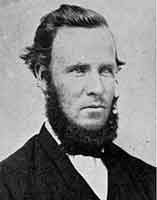
The Town of Oakville was the gateway to Canada for many African Americans, as early as the 1830s.
Ships from Oakville sailed throughout the Great Lakes and beyond, and many slaves were assisted by ship captains to stow away in grain vessels.
"Particularly well remembered is Captain Robert Wilson (see item #9 above), who brought many African Americans to Oakville concealed aboard his ships. For years following the American Civil War (1861-1865), African Americans would come to George’s Square to celebrate Emancipation Day, and those who had been helped by “Captain Robert” would visit him at his nearby “Mariners Home”, which still stands at 279 Lawson Street."24
"Stories are also told of a tunnel which ran from the Sixteen mile creek to the Herb Merry House on Trafalgar Road..."24 If you know anything about this, or would volunteer to find out, please let us know!
Ships from Oakville sailed throughout the Great Lakes and beyond, and many slaves were assisted by ship captains to stow away in grain vessels.
"Particularly well remembered is Captain Robert Wilson (see item #9 above), who brought many African Americans to Oakville concealed aboard his ships. For years following the American Civil War (1861-1865), African Americans would come to George’s Square to celebrate Emancipation Day, and those who had been helped by “Captain Robert” would visit him at his nearby “Mariners Home”, which still stands at 279 Lawson Street."24
"Stories are also told of a tunnel which ran from the Sixteen mile creek to the Herb Merry House on Trafalgar Road..."24 If you know anything about this, or would volunteer to find out, please let us know!
|
Kerosene Castle 1860s (#10)
On the bank of The Sixteen between MacDonald and Lawson Street, Richard Shaw Wood established The Oakville Oil Refinery, which became one of the largest refineries of "coal oil" (kerosene) in Canada (until it was destroyed by fire in 1866). Across the street, at what is now 337 Trafalgar Road, he built what became known as, for obvious reasons, "Kerosene Castle". You'll recognize it today as MacLachlan College. |
The Captain Francis Brown House - 289 Trafalgar Road c1873 (#13)
|
Francis John Brown arrived in Oakville from England in 1867, drawn by the discovery of oil in western Ontario. He married shortly after his arrival, and bought the old brewery on Trafalgar just north of MacDonald, renaming it the Victoria Brewery. But by 1870 a depression started to close in on the town, forcing him to shut down the brewery. In that same year, Brown inheirited the property at 289 Trafalgar Road from the resolution of the long-contested will of his wife's grandfather, and during 1871 had a house built there.
From 1879 to 1889 he sailed extensively in the Orient, and over the years gathered a vast collection of rare and beautiful bronzes, ivories, embroideries, and vases. Following his return he held the first exhibition of his collection at his imposing residence on Trafalgar Road. |
Many families have lived in the Francis Brown House since the turn of the century. and numerous changes have been made to the structure, but none has affected its dramatic appearance. The Captain Francis Brown House is one of those rare cases where a widow's walk actually did provide a vantage point for the waiting wife.11
